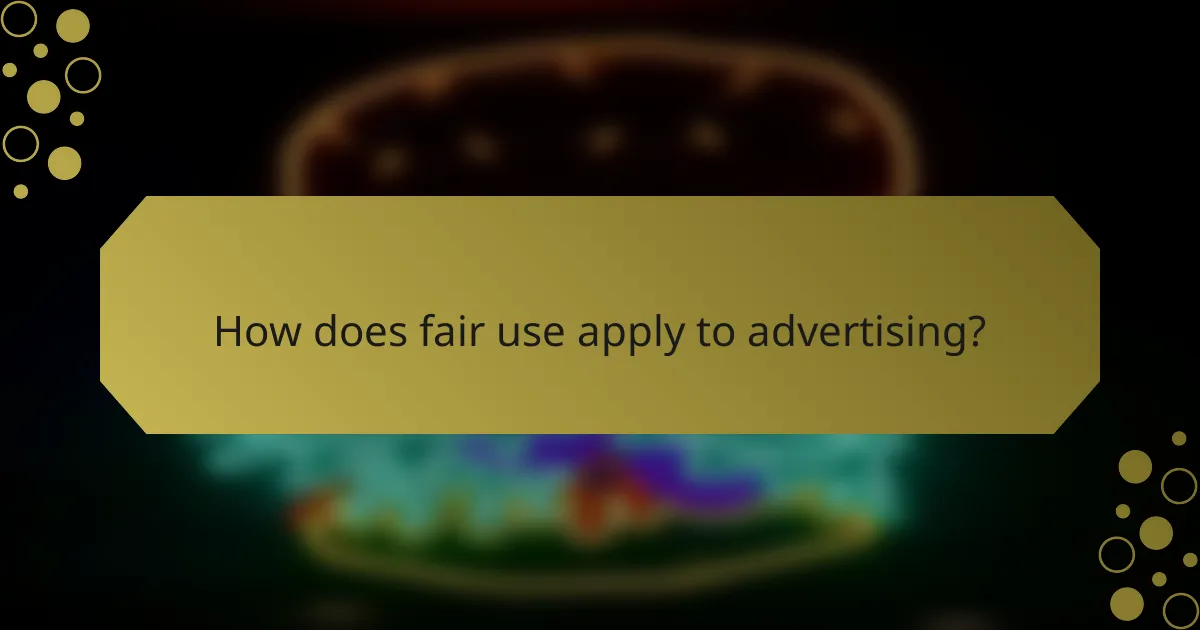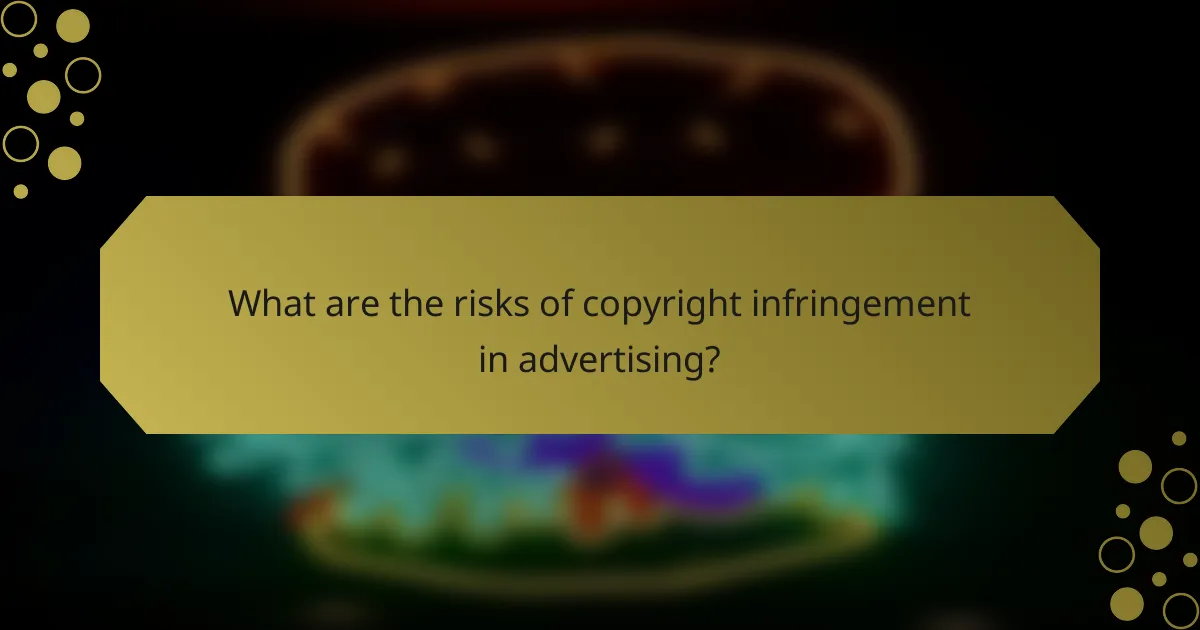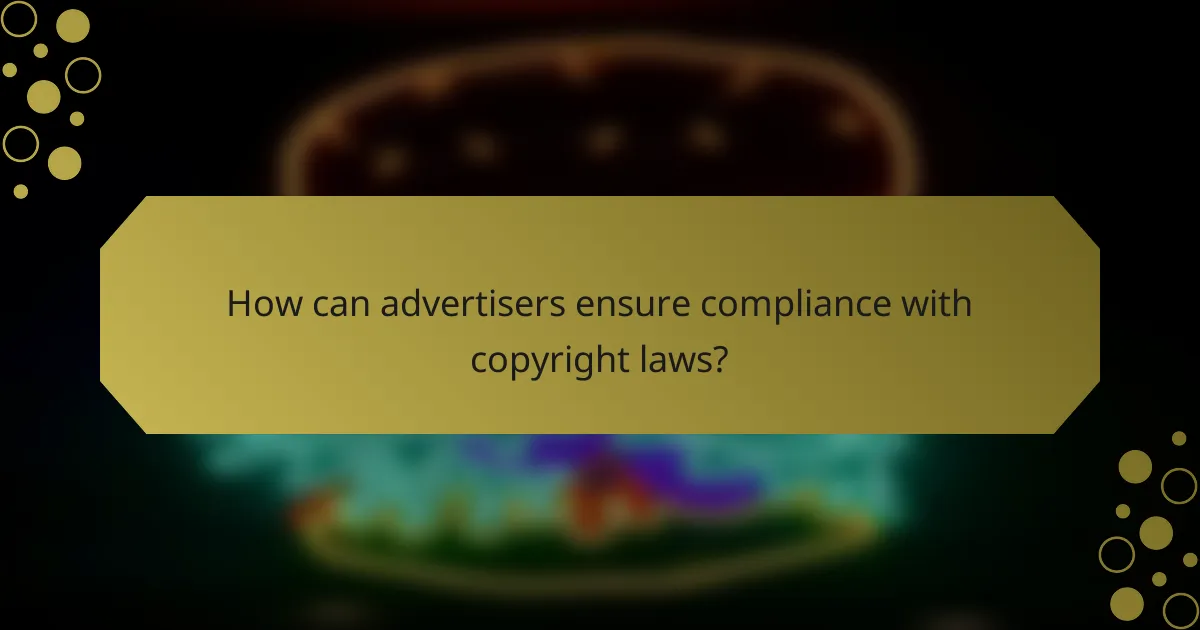Copyright issues in ad design are complex, involving the rights of creators, clients, and third parties. Fair use plays a critical role, allowing limited use of copyrighted material in advertising without permission, while licensing options dictate how creative works can be utilized. Navigating these aspects is essential for compliance and effective promotional content.

What are the copyright ownership issues in ad design?
Copyright ownership in ad design revolves around who holds the rights to the creative work produced. This can involve multiple parties, including the creator, the client, and any third parties involved in the design process.
Creator ownership
Creators, such as graphic designers or copywriters, typically retain ownership of their original works unless otherwise specified. This means they have the right to control how their designs are used, reproduced, or distributed. However, many creators may choose to transfer these rights to clients or other entities through contracts.
It’s crucial for creators to understand the implications of ownership, as retaining rights can allow them to showcase their work in portfolios or seek additional compensation for future uses. Clear communication about ownership expectations can prevent disputes later on.
Client ownership
Clients often seek ownership of the advertising materials they commission, which can include logos, advertisements, and promotional content. Typically, this ownership is established through contracts that specify the transfer of copyright upon payment. Clients should ensure that these agreements are clearly outlined to avoid any ambiguity regarding usage rights.
Clients must also consider the scope of their ownership. For instance, they may want exclusive rights to a design or may be comfortable with the creator retaining certain rights for self-promotion. Understanding these nuances can help clients make informed decisions about their advertising assets.
Work-for-hire agreements
Work-for-hire agreements are contracts where the creator agrees that any work produced is owned by the client from the outset. This arrangement is common in advertising, as it simplifies ownership issues by ensuring that the client holds all rights to the created materials. However, it is essential for both parties to clearly define the terms of the agreement.
When entering a work-for-hire agreement, creators should be aware that they may forfeit their rights to the work entirely. Clients should ensure that the contract specifies the scope of work, payment terms, and any limitations on the creator’s future use of the designs. This clarity helps prevent misunderstandings and protects both parties’ interests.

How does fair use apply to advertising?
Fair use allows limited use of copyrighted material without permission, especially in advertising. It is essential to understand how this legal doctrine can protect or challenge the use of creative works in promotional content.
Transformative use
Transformative use is a key factor in determining fair use. This concept refers to whether the new work adds something new, with a different purpose or character, compared to the original. For example, using a famous image in an advertisement that comments on or critiques the original work may qualify as transformative.
When assessing transformative use, consider how much of the original work is used and whether it alters the original’s message. Courts often favor uses that provide new insights or artistic expressions over those that merely replicate the original.
Commercial vs. educational use
Commercial use, such as advertising, is generally scrutinized more closely under fair use than educational use. While educational contexts may allow for broader use of copyrighted materials, commercial contexts often require a stronger justification for fair use. Advertisers should be cautious when using copyrighted content to avoid potential legal issues.
To navigate this, advertisers can consider licensing options or seek to create original content that doesn’t rely on existing works. If using copyrighted material, ensure that the use is clearly transformative and serves a distinct purpose beyond mere commercial gain.

What licensing options are available for ad design?
Ad design can be licensed through various options, each offering different rights and restrictions. Understanding these licensing types is crucial for ensuring proper use and compliance in advertising materials.
Exclusive licenses
Exclusive licenses grant the licensee sole rights to use the ad design, meaning the creator cannot license it to anyone else. This type of license is often more expensive but provides a competitive edge, as it prevents others from using the same design.
When negotiating an exclusive license, consider the duration and geographical scope of the rights. For instance, an exclusive license might be limited to a specific country or region, which can affect pricing and usage rights.
Non-exclusive licenses
Non-exclusive licenses allow multiple parties to use the same ad design simultaneously. This option is typically more affordable and is suitable for businesses that do not require unique branding.
Keep in mind that while non-exclusive licenses are cost-effective, they may dilute brand identity if competitors use similar designs. It’s essential to assess how this could impact your marketing strategy.
Creative Commons licenses
Creative Commons licenses provide a flexible range of protections and freedoms for creative works, including ad designs. These licenses allow creators to specify how others can use their work, from requiring attribution to allowing modifications.
When using Creative Commons licensed materials, ensure you comply with the specific terms outlined, such as attribution requirements or restrictions on commercial use. This can help avoid legal issues while benefiting from a wide array of creative resources.

What are the risks of copyright infringement in advertising?
Copyright infringement in advertising poses significant risks, including legal repercussions and financial liabilities. Advertisers must be cautious when using copyrighted materials, as unauthorized use can lead to serious consequences.
Legal consequences
Engaging in copyright infringement can result in lawsuits and legal actions from copyright holders. Courts may issue injunctions to stop the use of infringing materials and can also require the destruction of infringing copies.
In the United States, copyright infringement can lead to statutory damages ranging from hundreds to thousands of dollars per work, depending on the case’s specifics. Advertisers should seek legal advice to navigate copyright laws effectively.
Financial penalties
Financial penalties for copyright infringement can be substantial, often exceeding the initial costs of obtaining proper licenses. Companies may face damages that include lost profits, legal fees, and fines imposed by courts.
In some cases, penalties can reach tens of thousands of dollars, especially if the infringement is deemed willful. To avoid these costs, businesses should invest in proper licensing agreements and conduct thorough copyright checks before using any third-party content.

How can advertisers ensure compliance with copyright laws?
Advertisers can ensure compliance with copyright laws by understanding ownership rights, utilizing fair use principles, and obtaining necessary licenses for content. This proactive approach helps avoid legal disputes and enhances the integrity of advertising campaigns.
Conducting copyright audits
Conducting copyright audits involves reviewing all content used in advertising to identify potential copyright issues. This includes images, videos, music, and text. Regular audits help ensure that all materials are either original, licensed, or fall under fair use.
To perform an effective audit, create a checklist that includes content sources, licensing agreements, and expiration dates. This practice not only mitigates risks but also fosters a culture of respect for intellectual property within the organization.
Using licensed content
Using licensed content is a straightforward way to comply with copyright laws. Advertisers should seek out reputable sources for stock images, music, and other creative materials that come with clear licensing agreements. This ensures that the content can be legally used without infringing on the rights of the original creators.
When selecting licensed content, consider the type of license that best fits your needs, such as royalty-free or rights-managed licenses. Always read the terms carefully to understand any restrictions on usage, distribution, or modifications. This diligence protects your brand from potential legal challenges.

What are the best practices for obtaining permissions in ad design?
Obtaining permissions in ad design involves securing the rights to use images, text, and other elements legally and ethically. Best practices include establishing clear written agreements, understanding attribution requirements, and being aware of fair use guidelines.
Written agreements
Written agreements are essential for clarifying the terms of use for any creative assets in ad design. These contracts should specify what is being licensed, the duration of use, and any restrictions on modifications or distribution. Always ensure that both parties sign the agreement to avoid misunderstandings.
When drafting a written agreement, consider including clauses that address payment terms, renewal options, and liability. This can help protect both the creator and the advertiser from potential legal disputes. For example, a one-time fee for a specific campaign versus ongoing royalties for extended use can significantly impact budgeting.
Attribution requirements
Attribution requirements dictate how credit should be given to creators of the content used in ad design. These requirements can vary based on the licensing agreement or copyright laws applicable in your region. Always check the specific terms associated with the assets you are using.
For instance, some licenses may require you to include the creator’s name, the title of the work, and a link to the original source. Failing to adhere to these requirements can lead to copyright infringement claims. A good practice is to maintain a checklist of attribution needs for each asset to ensure compliance.

What emerging trends are shaping copyright issues in advertising?
Emerging trends in advertising are increasingly influencing copyright issues, particularly with the rise of digital media and user-generated content. Advertisers must navigate complex landscapes of ownership, fair use, and licensing to protect their creative assets while complying with legal standards.
Increased use of user-generated content
User-generated content (UGC) is becoming a staple in advertising, allowing brands to engage with consumers more authentically. However, using UGC raises questions about copyright ownership, as the original creators retain rights to their work. Brands should seek explicit permission from content creators and consider licensing agreements to avoid potential legal disputes.
Growth of digital platforms and social media
The expansion of digital platforms and social media has transformed how advertisements are created and shared. These platforms often have their own copyright policies, which can complicate ownership claims. Advertisers need to familiarize themselves with the terms of service for each platform to ensure compliance and protect their intellectual property.
Adoption of artificial intelligence in design
Artificial intelligence (AI) is increasingly used in ad design, generating images and content that may raise copyright concerns. The ownership of AI-generated material is still a gray area, as traditional copyright laws may not apply. Advertisers should consider the implications of using AI tools and seek legal advice to clarify ownership rights.
Focus on fair use in advertising
Fair use remains a critical concept in advertising, allowing limited use of copyrighted material without permission under specific conditions. Advertisers must understand the factors that determine fair use, such as the purpose of use, the nature of the work, and the amount used. Careful evaluation is essential to avoid infringing on copyright while leveraging existing works.
Emerging licensing models
New licensing models are evolving to accommodate the changing landscape of advertising. Creative Commons licenses, for example, offer flexible options for sharing and using creative works. Advertisers should explore various licensing agreements to ensure they have the right to use content while respecting the rights of original creators.
